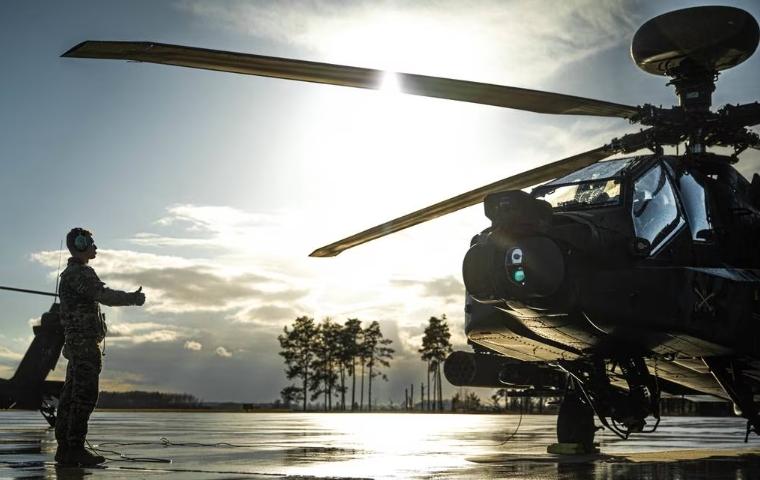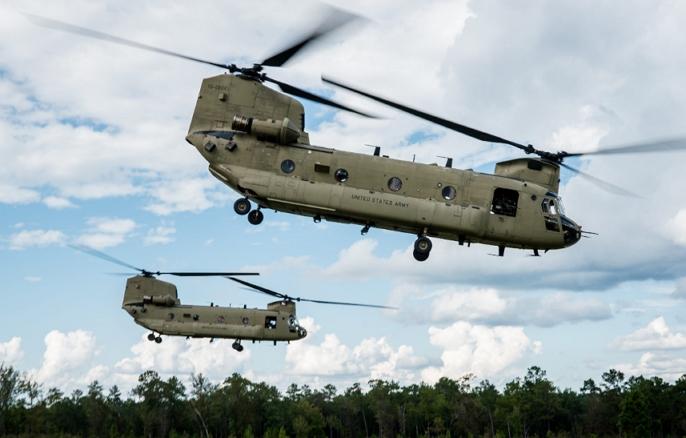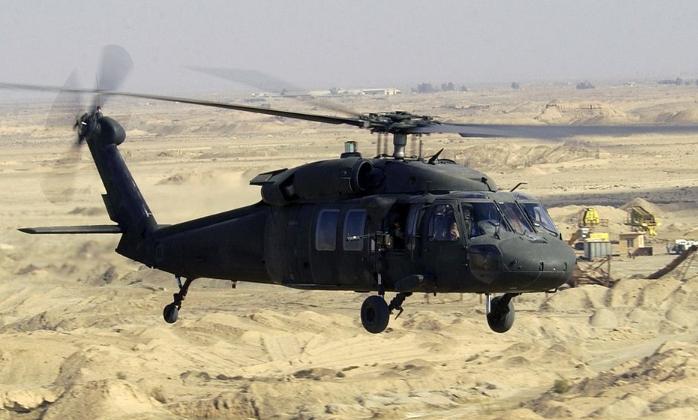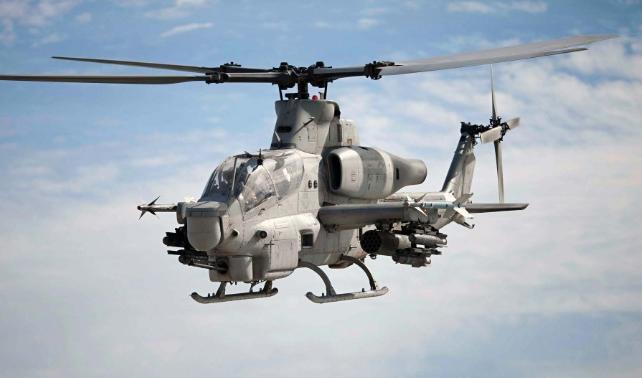Strategies Developed by Industry to Maintain Helicopter Fleet Capability for Decades

In an effort to extend the lifespan of the U.S. Army’s helicopter fleet, manufacturers are developing strategies to update the aging aircraft, which are approaching 40 years in service. The goal is to ensure that these helicopters remain operational for many more years to come.
The US Army intends to introduce two new vertical lift aircraft by the early 2030s, namely the Future Long-Range Assault Aircraft and the Future Attack Reconnaissance Aircraft. However, the Army acknowledges that the existing helicopter fleet, which dates back to the 1980s, will need to remain in service even as the transition to newer aircraft is taking place.
During the Army Aviation Association of America’s annual conference held in late April, General James McConville, the Army Chief of Staff, announced that the Apache and the Black Hawk helicopters are expected to remain in service for another 30 to 40 years.
According to Army officials, there is a possibility that the CH-47 Chinook could remain in service for up to 100 years and may retire around the year 2060.

Despite the Army’s plan to keep its current fleet flying for several more years, Army Chief of Staff Gen. James McConville has acknowledged that eventually, these aircraft will be retired and displayed at Army aviation headquarters, similar to the UH-1 Huey, OH-58 Kiowa Warrior, and AH-1 Cobra. However, there is still uncertainty about the timeline for phasing out these older aircraft and how many new aircraft will replace them.
During an interview at the AAAA conference, Maj. Gen. Robert Barrie, the Army’s program executive officer for aviation, stated that he is not comfortable setting specific timelines for how long the current helicopter fleet will remain operational. He emphasized that the Army’s focus is on ensuring that the fleet remains relevant and ready to serve soldiers as long as they are in operation.
Maj. Gen. Mac McCurry, the commander of the Army Aviation Center of Excellence, stated in an interview that the Army is updating its aviation force design.
“The update will involve determining the basis of issue and allocation of new aircraft, which may not be a direct one-for-one replacement for existing aircraft like the Black Hawk. The Army will assess how many of each type of aircraft are needed in each formation and consider increased capabilities.”
According to McCurry, the Army will have a better idea of its force structure once the future vertical lift programs move into the engineering and manufacturing development phases. During this stage, the service will be able to evaluate how the new aircraft perform in both developmental and operational testing, and how they match up with the roles and missions the Army has in mind for them. This will allow the Army to optimize its fleets and potentially reduce the number of older platforms still in use.
Upgrades for existing aircraft
According to McCurry, some of the helicopters in the current fleet are relatively new due to recent upgrades and the date when the last airframes were built. He pointed out that the Apache fleet, which used to be older, is now considered younger due to the latest variant and upgrade plans. On average, the UH-60 fleet is about 16 years old, and a significant number of Chinook helicopters are about 9 years old.
“When I look at the actual flight hours on the platforms, they’re fairly young,” McCurry said.
According to Barrie, the Army’s current focus is on ensuring the safety and baseline capability of the current fleet. This includes digitizing all aircraft to enable upgrades and increasing processing power within them. Key to modernizing the current fleet will be ensuring that it has the same modular, open-system architecture to continue importing capability and upgrades.

As adversaries continue to advance their capabilities and tactics, the Army is increasing funding for survivability equipment in its fiscal 2024 budget, according to Barrie. The service is also making modifications to its radio and communication systems, including upgrades to Link 16 technology that enables communication between aircraft and ground forces.
In the coming years, the Black Hawk and Apache helicopters will receive a new next-generation engine, though it has been delayed by several years. The latest upgrade, the V6, will be provided to Apache Echo-models, which has already been fielded to units in 2021.
Keeping up with the future fleet
During recent trade shows, defense contractor Boeing has presented its plans to enhance the Apache helicopter beyond its latest version. According to Jenny Walker, who is in charge of business development for Boeing’s Apache program, the upgrades would incorporate new transformation technology and result in performance gains.
The Apache model exhibited at the event featured an extra wing pylon to augment the current two, thus allowing for more onboard weapons with a greater range of capabilities. Boeing also displayed a design for a directed-energy feature on one of the pylons.
“The Improved Turbine Engine Program (ITEP) engine, drivetrain, and tail-rotor improvements that will be integrated into Apache helicopters in the coming years will enable the addition of more payloads to the aircraft,” says Walker.
The helicopter will be able to fly 135 nautical miles to a target, stay there for an hour or more, and return. By comparison, the current Apache would only be able to remain at the objective for approximately 30 minutes.

According to Paul Lemmo, the president of Lockheed’s Sikorsky, the company is prioritizing ensuring the Black Hawk’s compatibility to operate alongside the Future Long-Range Assault Aircraft. At the same time, Lockheed Martin has also designed a next-generation turret for the Apache’s sensors that can help it see and target threats. The turret has a faster slew capability for pilots to keep eyes on targets and accurately fire weapons, which will reduce maintenance time and enable easier upgrades down the road. The turret will undergo a year-long soldier evaluation starting this month.
Paul Lemmo stated: “The company’s top priority is to guarantee that the Black Hawk is compatible with the Future Long-Range Assault Aircraft, not necessarily to make them the same, but to operate on the same open-system standard.”
Sikorsky, a subsidiary of Lockheed Martin, is exploring the possibility of utilizing digital vehicle controls for their aircraft. This would allow for the integration of systems such as their autonomy system called Matrix, which would not replace pilots completely but would assist them with some tasks, allowing them to focus on the mission. The Matrix system would also improve safety by autonomously avoiding accidents such as mid-air collisions and flying in low visibility environments. The company is aiming to ensure that the Black Hawk and the Future Long-Range Assault Aircraft can operate on the same open-system standard for greater interoperability.
Although the Chinook F-model Block II has not yet been deployed to the active force, it will still enhance lift capability. Initially, the plan was to replace the rotor blades with advanced ones, but the Army canceled the effort a year ago due to issues with blade stall and vibration during testing. According to Barrie, the technical issues with the advanced rotor blade persist and the cost remains high, but the Army has proceeded with Block II development and has discovered that the system can meet performance requirements even with the older blades.
Boeing’s H-47 program manager, Ken Eland, expressed his interest in continuing the development of advanced rotor blades for the Chinook F-model Block II. He likened the current state of the project to a patient in critical condition, and said that he is working closely with the U.S. Army to keep the project going. Although there have been some challenges in terms of timing and technical issues, Eland remains committed to keeping the project on “life support.”

